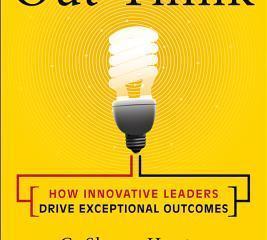

“Stragility – Excelling at Strategic Changes” by Ellen R. Auster and Lisa Hillenbrand (Rotman-UTP Publishing, $27.95).
Stragility (n.) – the ability to adapt to changes in your market space and stay on course.
What does adaptation involve? Systematically reassessing “winning.” To do this, a company must do more than measure outcomes of current activities. It must also look deeper into changes affecting outcomes by differentiating between the execution-related, the “ineffective choices because of sunk costs” and those caused by market shifts and competition. Trendspotting also plays an important role in course adjustments.
The authors offer a number of tools that help a company make a “this-day-forward” decisions:
“Shifting through backcasting.” – Use insights from ‘today’ to imagine alternative futures. Develop other strategic visions of tomorrow and decide how to best evaluate them. Invest in pilot programs to test assumptions and use the results to adjust course.
“Sensing PESTE (political/legal, economic, social, technological, ecological)” forces that affect the company, its external stakeholders and the marketplace. – It’s a comprehensive “what if” exercise that identifies potential opportunities and obstacles. Political/legal deals with regulatory environment, taxes, trade agreements and governmental incentives. Economic looks at interest/exchange/inflation rates, the labor market (i.e. skill availability, cost). Social involves customer demographics. Technological really involves crystal-ball thinking because such changes usually are disruptive and quickly affect internal processes, and the economic and social environments. Ecological not only deals with the planet/natural resources, but also the community.
“Sensing the competitive landscape.” List your major competitors and look at their differentiators and the strengths and weaknesses of their strategies versus yours. Look at industry trends (i.e. Cable TV has been affected by video streaming) and relate them to the PESTE analysis. Also look for outliers (Blackberry was ambushed by Apple’s iPhone).
All of the “this-day-forward” analysis and adaptation requires a workforce attuned to change. People need to understand the ‘why’ of the new way of doing business. “Communicate, communicate, communicate.” Provide the resources and training they’ll need to do things differently and to do different things. Listen to ideas and feedback.
“XLR8” by John P. Kotter (Harvard Business Review Press, $25).
Traditionally, organizational processes have been built around running what’s directly in front of them. Kotter maintains that ingrained processes can’t quickly respond to change and competitive threats, nor seize opportunity. He advocates a networking (people, not IT) system that operates in concert with the processes and procedures system.
Why the dual system? People accelerate progress; processes and procedures impede it.
It doesn’t create organizational anarchy because the networkers work within both systems; they know how the firm does business. Rather, it brings together “volunteers” at all levels to provide top-to-bottom perspectives of issues, alternatives and opportunities. When employees become agents of change, they “desire to work with others for an important and exciting shared purpose.” Siloes crumble. Leaders emerge.
The coalition of networking volunteers has a sense of urgency about the need to think and act on continuous improvement and capitalize on opportunities. To sustain urgency, celebrate all wins. These make even the most command-and-control manager take notice of the contribution facilitated by collaboration.
The processes involved in achieving wins become part of the organization’s core system of processes and procedures. The dual system institutionalizes change through evolution.
Kotter cautions management about hand-picking volunteers (i.e. those “with the right skill sets”). Why? Instead of focusing on what they have the most energy and passion for, the hand-picked focus on task specifics as identified and dictated by the hierarchy — and the benefit of the initiative network wanes.
Before reading the book, check out Kotter’s six-minute, mindset-changing video at kotterinternational.com.
Jim Pawlak is a nationally syndicated reviewer of business books.






